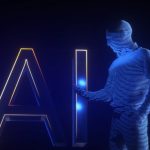Tesla‘s CEO, Elon Musk, has provided new updates on the company’s ambitious project, the Humanoid Robot known as Optimus. Initially unveiled at the Artificial Intelligence Day three years ago, Optimus is designed to handle mundane and repetitive tasks. Tesla aims to start low production for internal use by 2025 and intends to scale up production by 2026 to offer it to other companies. This timeline reflects the company’s strategy to integrate robots into its operations before making them commercially available.
Comparing previous reports with the current update, it is evident that Tesla has faced delays in its initial timeline. Musk initially projected that operational units would be ready for Tesla factories by 2022, but progress has been slower than anticipated. Despite these delays, the project continues to be a significant focus for Tesla, given its potential to transform labor-intensive tasks.
Other reports have highlighted Tesla’s ongoing efforts to enhance its AI capabilities beyond its Full Self-Driving suite. The Optimus project aligns with this broader vision, although the company’s ambitious timelines often face scrutiny. Earlier reports suggested that the robots would be performing basic functions, but the recent statements indicate a more advanced stage of development.
Internal Deployment by 2025
Musk confirmed that low production of the Optimus robots would commence next year for internal use. He emphasized that the robots would start with tasks that are considered dull and repetitive, typically those tasks employees would prefer to avoid. This approach aligns with the company’s focus on automation and efficiency in its factories.
Commercial Availability in 2026
By 2026, Tesla plans to ramp up production significantly, making Optimus available for other companies. The robot is expected to navigate complex environments and perform tasks without needing explicit instructions. This advancement could revolutionize industries that rely heavily on manual labor.
Tesla is not only working on the physical production but also increasing job postings to find experts for field testing the robots. This indicates that the company is serious about meeting its ambitious goals despite past delays. The upcoming years will be crucial for Tesla as it aims to transition from low production to a higher scale, impacting various industries.
Elon Musk’s latest update suggests that Tesla remains committed to overcoming challenges in developing the Optimus robot. For businesses, this robot could offer significant improvements in operational efficiency and cost savings. As Tesla continues to push the boundaries of AI and robotics, the success of Optimus could set new benchmarks for automated labor solutions.










